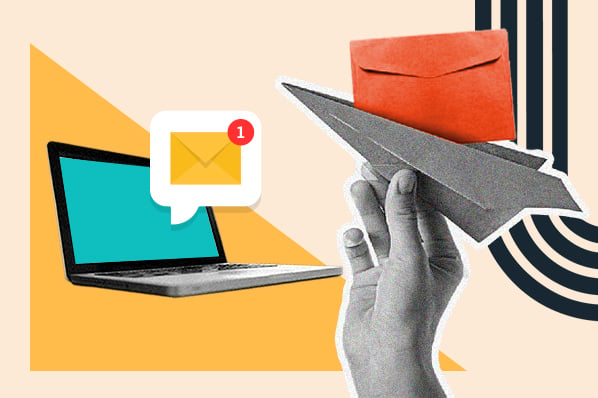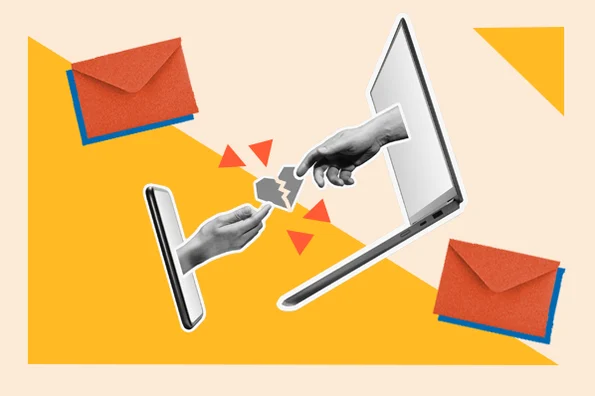
Few things top getting off on the right foot with a prospect. When you and the buyer connect off the bat, making the sale just comes naturally.
And where does that first impression happen? More often than not, online, with the first email you send. So here are a few things to ask yourself before you reach out to prospects for the first time to upgrade your cold emails.
1) Do I know their pain point?
A prospect’s pain is the primary reason they are going to make a purchase. Before writing that crucial first email, you need to understand how your product can help turn their pain point into a strength. If you don’t understand their pain point, or at least have a general idea of what they’re likely struggling with, it makes positioning your product as a solution difficult. Without knowing what it is they need to solve, how can you help them solve it?
To determine pain, commit to research. Study their business and look for a weakness or a point where they could improve.
2) Do I know what’s happening in their market?
Studying a prospect’s market gives you insight into their biggest challenges and where they need to improve. If you notice that some companies are hiring and expanding while others are cutting back, you have a clear picture of which companies are trending in the right direction.
By demonstrating knowledge of the prospect’s market in your initial sales email, you can build credibility with this person. You’re not only knowledgeable about their business, but you’ve taken the time to study their competitors and can now help implement an effective strategy for change.
3) Will my name be familiar?
With an average response rate of 1.7%, the cold email is clearly losing its effectiveness.
Why? It lacks context. Today, we all screen our calls and emails. If we’re unfamiliar with the person reaching out to us, we’ll probably ignore them.
If the prospect doesn’t recognize your name, their initial reaction might be to hit the “report spam” button on your email. In sales, this a less-than-ideal outcome.
So instead of this person seeing your name for the first time in their inbox, aim to become familiar online first. To create rapport with a person before you begin email prospecting, connect with them on social media, comment on a blog post they’ve written, or reach out to a mutual connection and ask for an introduction. All three of these techniques give you a chance to spark a discussion and make your name familiar.
4) Do I have the right mindset?
Approaching a sale with the mindset of helping, guiding, and offering clarification is the mindset of the modern rep. According to CEB, today’s buyer is going through almost two-thirds of the journey without talking to anyone in sales. With this in mind, reps need to adjust and be ready to embrace the "always be helping" mentality, instead of "always be closing."
This takes the stigma of an annoying, pesky, or pushy sales rep out of the equation because you’re looking to guide prospects through their buying journey. If write your email thinking you have to close, you might shove your product down their throat or force them through the funnel faster than they want to go.
5) What’s the value of this email?
What does the prospect get out of your message? What insights can you offer them in this email that they can’t get somewhere else?
Keep in mind that any touch can be the deciding factor behind whether or not this person buys from you. Bothering a prospect with an email they don’t need can be the downfall of a rep -- before the sale ever begins. When you’re able to offer value from the jump, you prompt responses and move the conversation forward.
Here are a few things you can include to make your email valuable:
- Offer a strategy suggestion
- Reference a mutual connection
- Include a blog post about your product
- Send a customer review
6) What action do I want the recipient to take?
What’s the goal of this email? Do you want the prospect to reach out when they need more information or are you looking to set up a product demonstration?
Reps can often forget to include a call-to-action in their emails, making it difficult for the prospect to respond. Without giving prospects a defined next step, it can be a challenge to move forward.
Here are some examples of calls-to-action reps can include in their sales emails:
- Include a calendar invite
- Provide a case study and ask the buyer to read it
- Ask when they’re free for a discussion
- Send them to a piece of content for review
- Ask a question about something they’ve written
The introductory email sets the tone for the relationship. Before you reach out, ask yourself these six questions to determine whether or not you’re fully prepared to send that email. If you can’t answer all of these questions, hit the reset button and get back to the drawing board.






![How to Find Almost Anyone’s Email Address, Without Being Creepy [+Expert Tips]](https://www.hubspot.com/hubfs/132_Find%20Email%20Address.jpg)





